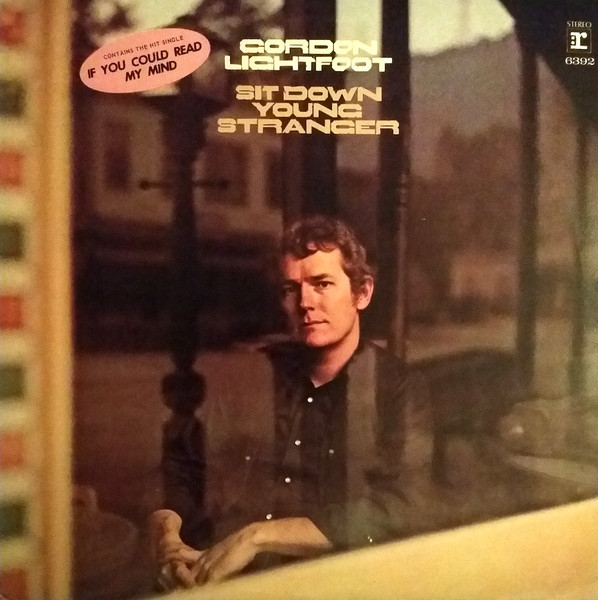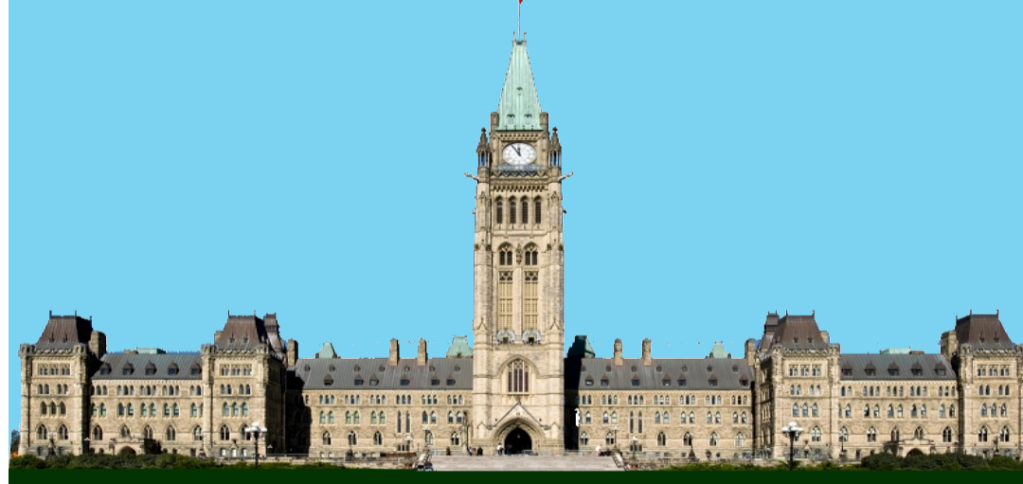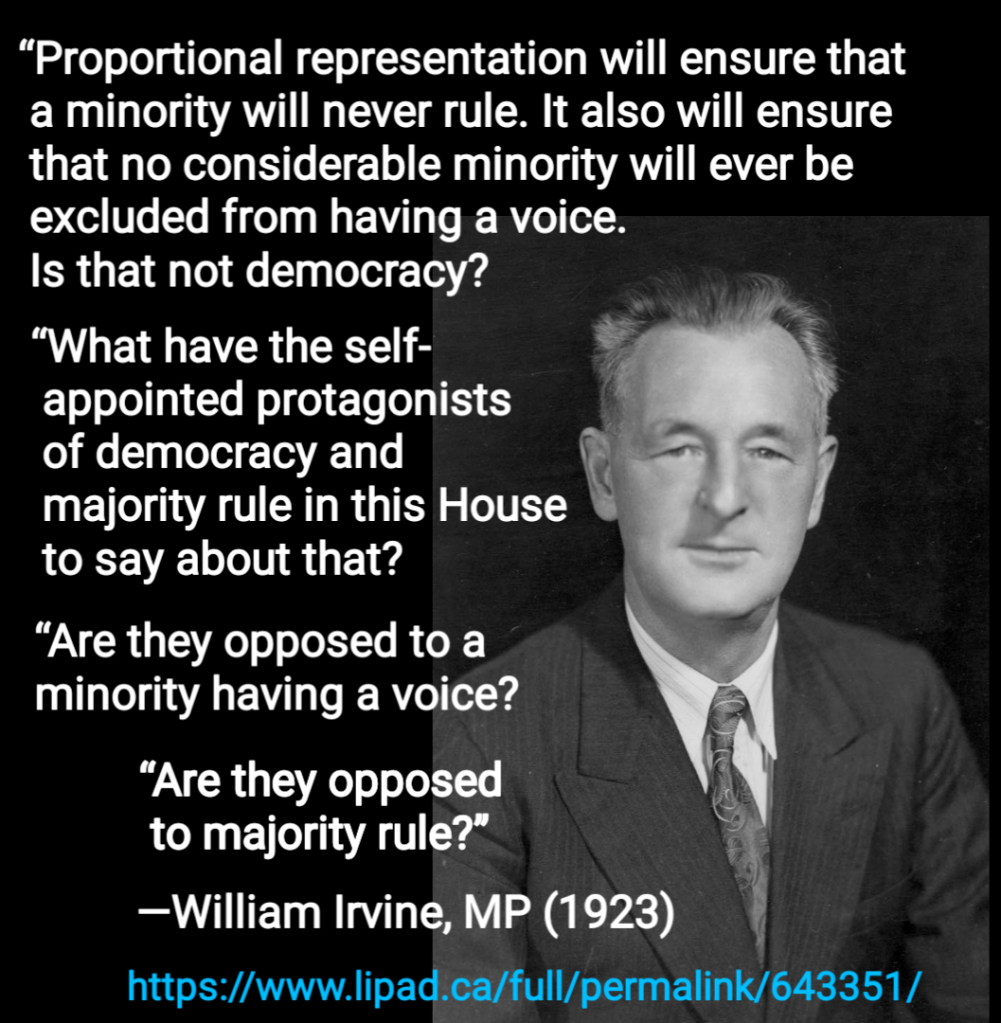The Canadian Government is looking for input from “all members of the public, especially persons with disabilities, their families and caregivers.”

The Canada Disability Benefit Act became law on June 22, 2023. The Act provides the framework for a new Canada Disability Benefit. This benefit is being created to reduce poverty and support the financial security of working-age people with disabilities.
Your feedback will help inform the development of regulations for the Canada Disability Benefit.
Your answers are confidential. No personal information will be collected or reported. Do not include any personal information (name, given name, date of birth, etc.). A summary of all the feedback received will be included in a report on the regulatory engagement process, which will be tabled in Parliament and published on the Employment and Social Development Canada website.
You have until December 21, 2023 at 23:59 (Eastern Time) to provide your feedback,”
Government of Canada: Share ideas: Canada Disability Benefit Regulations https://www.canada.ca/en/employment-social-development/programs/disabilities-benefits/consultation-canada-disability-benefit-regulations.html
MAKE A SUBMISSION
The government has set up a variety of ways people can make a submission:
- Share your ideas online with the online engagement tool.
- Send an Email with your comments.
- Participate by phone by calling 1‑833‑390‑4065 and leave a message
- Mail your comments to the Consultation, Canada Disability Benefit Regulations
- Participate by video relay (ASL and LSQ) by emaili and write “Sign language response” in the subject line. They will contact you to set a date and time for you to give your comments.
- Email a link to a recorded video of your comments. Please save your video on a repository platform (for example, Google Drive).
- To arrange for a transcript, contact using any of the methods listed to arrange to speak to someone who will transcribe your input and give it to us.
No matter which method you decide would work best for you, the Online Engagement Tool can provide you with a framework.
When making a submission, a long multi-page online survey like the one the government is calls its “online engagement tool” can seem quite daunting. It could even have been designed this way to limit the scope of the responses, making the public feedback easier to aggregate.
There are pros and cons to an anonymous consultation. One very important advantage is that people can say what they think without fear of retribution.
Although you can go back and forth through the pages while you’re filling in the submission form, when you open the last page your submission you have been working on is automatically submitted regardless of whether you are done. This means you can no longer go back and make any changes, or even just read through what you’ve written.
An important disadvantage is that if you take too long trying to decide exactly what it is you need to say, your session might time out, and you could lose access to the form you have been preparing for submission.
Because posts are anonymous, you won’t be able to save your draft; so if you leave your submission, you won’t be able to retrieve it.
Another disadvantage of anonymous consultation is that when all input is anonymous, it is is hard for people to audit the result. If, for example, five thousand people asked for the same thing you asked for, if the report says only one person asked, you may never know otherwise.
Anyone making a submission who doesn’t need to be anonymous can help encourage others to make submissions by publishing their own publicly, on their website, blog or social media page. This helps raise awareness as well as allowing folks to get an idea of the range of issues.
I find it very useful to know what the questions are before I make a submission, because it gives me time to really think about the answers they ask, leaving me time to think about what it is I want to say. When you know in advance you can write down your answers in advance, then all you need do is cut and paste them into the appropriate parts of the government’s form. For your convenience, the questions in this survey follow.
Canada Disability Benefit Act
COMMENT before the regulations are drafted
To help draft the regulations, the Government is asking Canadians to comment on the topics contained in the Act. We have created a tool that explains the sections of the regulations and lets you submit your comments. You can make general comments or provide your thoughts on specific sections. You can also leave fields blank. Any input you provide is important to the Government and will be carefully considered.
There are six sections on the regulations in the tool. Each section has questions and comment boxes to help you comment. There is also a section for your ideas on the best practices or tools to help people access the benefit, and then a general comments section at the end.
In addition, you can also submit comments to the Office for Disability Issues:
- By phone: Call 1-833-390-4065 and leave a message
- By email: CDB@hrsdc.gc.ca link open in a new window
- By video relay: Send an email to the address above and write “Sign language response” in the subject line. We will contact you to set a date and time for you to provide your comments.
- By video: Use the email above to send us a link to a recorded video of your comments.
- Create a transcript: Contact us using any of the methods listed here. We will then arrange for you to speak to someone who will transcribe your input and submit it to us.
- By mail:
Consultation, Canada Disability Benefit Regulations
c/o Office for Disability Issues
Employment and Social Development Canada
105, rue de l’Hôtel de ville, 1st floor, Bag 62
Gatineau QC K1A 0J9
- Alternate formats:
Contact us using any of the methods listed above for a copy of the tool in a Word document.
The tool is also available in alternate formats on request.
QUESTIONS: Online Engagement Tool for Commenting on the Canada Disability Benefit
The Canada Disability Benefit Act gives the Government of Canada the authority to make regulations in different areas. You can provide input on any or all of these areas to help inform the drafting of the regulations.
Topic areas
A. Eligibility
B. Benefit amount
C. Applications and payments
D. Administration
E. Reconsiderations and appeals
F. Compliance and enforcement
G. Best practices or tools
H. General Comments
A: ELIGIBILITY
Special instructions
- Please make sure to use the buttons provided on the bottom of the page rather than the browser buttons to navigate this website. Using the browser buttons may cause undesirable results.
- Selecting a link on the menu bar will close your session. Any information entered during this session will be lost.
- After a 30 minute period of inactivity, you will receive a warning of session expiry. To continue your session and avoid losing information, you must press the “Ok” button within 3 minutes of the notice appearing to extend your session.
- If you did not successfully complete the engagement tool due to technical difficulties, any information entered during this session will be lost and you will have to start over.
- You can go through the tool without answering the questions, to gather information or learn about the regulatory areas. You can then open it again another time when you are ready to submit feedback.
To be eligible for the Canada Disability Benefit, individuals will have to meet 3 requirements. They will have to:
- be of “working-age”
- have a disability that meets the assessment criteria
- be a resident of Canada
These requirements are described in more detail below.
AGE
This benefit is designed to fill the gap in support between eligibility for the Child Disability Benefit (for children with disabilities under age 18) and Old Age Security and the Guaranteed Income Supplement (for people aged 65 and older). Specifically, the Canada Disability Benefit is being created to reduce poverty and support the financial security of working-age people with disabilities. The regulations will therefore have to define “working-age.”
Context: Provincial and territorial programs that provide social and disability assistance to people of working-age generally define it as people aged 18 to 64.
ASSESSMENT OF DISABLITY
Disability is a complex concept that can be defined in different ways.
Various federal, provincial, and territorial disability benefits require the applicant’s disability to be formally assessed. These assessments can look at different factors. Three such factors are described below.
- Severity of disability: Many programs consider how severe a disability is in the assessment of disability. How severe a person’s disability is may be determined by looking at things like:
- The type of disability
- The number of disabilities
- The impact that a disability has on activities
Poverty rates increase with the severity of disability. According to the 2017 Canadian Survey on Disability, of people with disabilities who live below the poverty line:
- 16% have mild disabilities
- 20% have moderate disabilities
- 28% have severe disabilities, and
- 34% have very severe disabilities.
- Ability to work: Some disability benefits are designed to replace earnings. These benefits are available only to people whose disability prevents them from earning a living. For example, this could be an individual who has a history of employment but is no longer able to work due to disability. Several provinces and territories have income assistance programs for people with disabilities. These programs require assessing the applicant’s ability to work.
- Activities of daily living: Many programs (including the federal Disability Tax Credit and most provincial and territorial income assistance programs) assess the impact that a disability has on daily activities. These activities may include the ability to walk or get dressed, or do more complex tasks, like cooking and shopping for groceries.
PLACE OF RESIDENCE
Most Government of Canada benefits require the applicant to live in Canada. This can be determined, for example, based on their residency status for income tax purposes.
For Canadian residency status, Canada Revenue Agency requires the individual to have “significant residential ties to Canada.” These include:
• a home in Canada
• a spouse or common-law partner in Canada
• dependents in Canada
For more information, see Canada Revenue Agency’s web page on Determining your residency status link open in a new window.
Do you have any comments regarding the eligibility criteria for the Canada Disability Benefit? (Optional)
You can submit comments up to 4000 characters in the info box here: (count letters, space, punctuation)
B: BENEFIT AMOUNT
For the regulations on the amount of the benefit, the Government will consider things like:
• Canada’s Official Poverty Line;
• the extra costs of living for people with disabilities;
• barriers to employment experienced by people with disabilities;
• the diversity of people with disabilities; and,
• Canada’s human rights commitments.
The regulations may specify how the amount of benefit will be set. For example, there may be:
• a maximum amount
• income thresholds (income testing)
• reduction rates (where a benefit decreases as income increases), or
• exemptions for a certain amount of earnings.
The regulations could also deal with indexing the benefit to inflation. These concepts are described in more detail below.
Maximum benefit amount: This is the highest amount that someone could receive. If the benefit is tied to income, someone could receive less than the maximum if they have other sources of income.
Income threshold: This is the amount of employment or social assistance income a beneficiary can have before the size of their benefit is reduced. Such an amount is also known as a general income exemption.
Reduction rate: This reduces the size of the benefit as income levels increase; the lower their income, the more money the beneficiary will receive. This helps ensure that people with low incomes are the ones who get the most money.
Earnings exemption: This allows a certain amount of employment or self-employment income to be exempt from the income testing of the benefit. Some programs use this to reduce barriers to work. This exemption could be considered in addition to a general income exemption.
Indexation: Inflation is an increase in the general price level of goods and services in the economy. A benefit that is indexed to inflation increases when inflation goes up.
The federal government uses the Consumer Price Index to adjust (index) benefits. Some benefits are adjusted once a year, such as the Canada Child Benefit. Some are adjusted every 3 months, such as the Old Age Security and Guaranteed Income Supplement benefits.
CALCULATING INCOME
The regulations may specify how income will be calculated. For example, if an applicant has a partner or spouse who lives with them, the amount may be based on their combined income. This is common for income-tested benefits. It helps ensure the benefit goes only to those who need it most. (The incomes of other members of the household, such as parents, adult children, or siblings, are not usually used in these calculations.)
Do you have any comments regarding the amount of benefit or how it will be calculated? (Optional) You can submit comments up to 4000 characters in the info box here: (count letters, space, punctuation)
C. Applications and Payments
APPLICATIONS
The regulations may set out rules for the application process. For example:
• when someone (or their representative) can apply
• how to apply
• the information that must be provided when applying, such as a social insurance number or other ways to verify the person’s identity
• ways to ensure the application process is secure and does not create barriers. Barriers are defined in the Accessible Canada Act. Barriers make it harder for someone with disabilities to apply.
Do you have any comments regarding the application for the benefit? (Optional)
You can submit comments up to 4000 characters in the info box here: (count letters, space, punctuation)
PAYMENT FREQUENCY
The regulations may specify how often the benefit is paid.
Context: Many Government of Canada benefits are paid monthly. This includes the Canada Child Benefit and Old Age Security and Guaranteed Income Supplement. Most provincial and territorial social assistance benefits are also paid monthly.
Do you have any comments regarding payment frequency? (Optional)
You can submit comments up to 4000 characters in the info box here: (count letters, space, punctuation)
RETROACTIVE PAYMENTS
Retroactive payments
The regulations may specify when someone would be eligible for a retroactive payment. This is a payment for past periods where an individual was eligible for a benefit but had not yet applied for it.
Context: It is common to have a limit on how far back a retroactive payment can be made. For example, Old Age Security and Guaranteed Income Supplement benefits may be paid retroactively for up to 11 months from the date the Government receives an application.
Do you have any comments regarding retroactive payments? (Optional)
You can submit comments up to 4000 characters in the info box here: (count letters, space, punctuation)
D. Administration
CORRECTION OF ADMINISTRATIVE ERRORS
The regulations may allow the Minister to correct errors, such as if an eligible individual did not get their benefit due to a mistake made by the Government.
Do you have any comments regarding the correction of administrative errors? (Optional)
You can submit comments up to 4000 characters in the info box here: (count letters, space, punctuation)
IDENTIFICATION OF DEBTS AND RECOVERY OF OVERPAYMENTS
Sometimes, the Government may give an individual more money than they should have received. This is known as an overpayment. Usually, overpayments happen when incorrect information is provided to the Government. Overpayments are known as “debts to the Crown.” The regulations could, for example, allow the Minister to:
• recover (take back) the overpayments
• limit the amount that can be recovered.
Do you have any comments regarding the recovery of overpayments? (Optional)
You can submit comments up to 4000 characters in the info box here: (count letters, space, punctuation)
ACTING AS A REPRESENTATIVE FOR AN APPLICANT OR BENEFICIARY
Acting as a representative for an applicant or beneficiary
The regulations may set out rules for applying on someone’s behalf when they are not able to apply themselves. The regulations could also deal with payments made to representatives on behalf of beneficiaries or situations where a representative is involved in a request for a reconsideration or appeal (see section E below). For example, the regulations could address:
• who can apply on someone’s behalf
• the process for applying on someone’s behalf
• what actions a representative can take on behalf of an applicant or beneficiary.
Do you have any comments regarding representatives of applicants or beneficiaries? (Optional)
You can submit comments up to 4000 characters in the info box here: (count letters, space, punctuation)
DEATH OF AN APPLICANT OR BENEFICIARY
The regulations may specify what happens when an applicant or beneficiary dies. For example, the regulations could address the rules for notifying the Minister of the death.
Do you have any comments regarding regulations dealing with the death of an applicant or beneficiary? (Optional)
You can submit comments up to 4000 characters in the info box here: (count letters, space, punctuation)
E. Reconsiderations and Appeals
RECONSIDERATION OF DECISIONS
Sometimes, an individual will disagree with a decision made by the Government. For example, they may be told they are ineligible, or they may not agree with how the benefit amount was calculated. That is why benefit regulations often define a process for asking that a decision be reconsidered. The regulations could also specify who will have the authority to change or revoke a decision.
Usually, the first step is to request a reconsideration. In that case, someone from the Government (but who was not involved in the original decision) would review the information. They would then make a new decision. This decision could be the same or different from the original decision.
Do you have any comments regarding reconsiderations of decisions made under the Act? (Optional)
You can submit comments up to 4000 characters in the info box here: (count letters, space, punctuation)
APPEALS
The regulations may set out how to appeal the Government’s decision in a reconsideration. They may also set out what types of decisions can be appealed, and how this can be done. For example, the regulations could address:
• who can appeal
• the body to which appeals should be made. This could include a court (such as the Federal Court or the Tax Court of Canada), an administrative tribunal (such as the Social Security Tribunal), or a combination of both
• the types of decisions that can be appealed
• the steps and timelines for making an appeal.
Do you have any comments regarding appeals? (Optional)
You can submit comments up to 4000 characters in the info box here: (count letters, space, punctuation)
F. Compliance and Enforcement
This area of the regulations would help ensure that people are not being taken advantage of, and that benefits go only to people who are eligible.
VERIFYING COMPLIANCE
The regulations may provide ways for the Government to make sure the rules for the benefit are being followed. For example, they may provide the authority to examine documents or conduct inspections. They could also require individuals to attend an in-person or online meeting with someone from the Government.
OFFENCES
The regulations may establish offences. For example, they could make it an offence to:
• knowingly use false identity information
• use another person’s identity information for the purpose of obtaining a benefit
• counsel a person to apply for a benefit with the intent to steal all or part of it
• intentionally provide false or misleading information on an application.
ADMINISTRATIVE MONETARY PENALTIES
Administrative monetary penalties
These are financial penalties. These are often used instead of charging someone with a criminal offence. For example, someone may receive a penalty for:
• providing information on an application they knew was false or misleading
• applying for and receiving a benefit they knew they were not eligible for.
The regulations may also set the amount of the penalty (how much the individual will have to pay).
Do you have any comments regarding compliance and enforcement? (Optional)
You can submit comments up to 4000 characters in the info box here: (count letters, space, punctuation)
G. Best Practices or Tools
We also want to know what the Government can do to help people apply for disability benefits. You can help by providing your views on best practices or tools that could:
• support people with disabilities in applying for this benefit or other federal programs
• help people with disabilities who are:
° experiencing homelessness
° from racialized communities or members of other communities or groups.
What are some best practices and tools that could support persons with disabilities in applying for this benefit or other federal programs? (Optional)
You can submit comments up to 4000 characters in the info box here: (count letters, space, punctuation)
Are there other best practices and tools that might help persons with disabilities who are experiencing homelessness, from racialized communities or members of other communities or groups? (Optional)
You can submit comments up to 4000 characters in the info box here: (count letters, space, punctuation)
H. General Comments
We also want any general comments on the regulations that you have, or final comments now that you have now that you have learned about each of the sections of the regulations.
Do you have any general comments on the Canada Disability Benefit Act regulations? (Optional)
You can submit comments up to 4000 characters in the info box here: (count letters, space, punctuation)
Demographic Questions (Optional)
As we encourage responses from all Canadians, the last few questions are to get a sense of who is participating in our engagement process. All responses will remain confidential and anonymous.
Are you participating in this engagement as an individual or as a representative of an organization?
- Individual
- Representative of an organization
Privacy Notice
(Last Page: “Continue” goes to the Thank You page; no going back.)
Before providing input, please read Employment and Social Development Canada’s privacy notice statement for consultation and engagement activities.
_______________________________________________________________________________________________
To COMMENT After the regulations are drafted
The Government will then analyze all of the input received and create a draft version of the regulations. These proposed regulations will be published in Part I of the Canada Gazette link open in a new window (the official newspaper of the Government of Canada). Once published, the public will have about 65 days to submit comments.
If you would like to be notified when the draft regulations are published, please send an email to CDB@hrsdc.gc.ca.
A Regulatory Impact Analysis Statement will be published in the Canada Gazette at the same time as the regulations. This statement will explain the purpose and expected benefits, impacts, and costs of the regulations. It will also discuss the feedback that was received and describe whether and how it was used.
How to submit comments on the draft regulations
Once the draft regulations have been published, you will be able to provide your input through the Canada Gazette consultation website or through other accessible ways.
Final steps
After reviewing the comments received, the Government may make changes to the proposed regulations. Once they are final, the regulations will be published in Part II of the Canada Gazette.


![Remembering Gordon Lightfoot Collage [Text] Gordon Lightfoot November 17, 1938 - May 1, 2023 [Photo] Gordon Lightfoot at Interlochen [Pictured] Album Covers • Lightfoot! (1966) • Two Tones at the Village Corner (1962) • The Way I Feel (1967) • Did She Mention My Name? (1968) • Back Here on Earth (1968) • Sunday Concert (1969) • Sit Down Young Stranger (1970) • Summer Side of Life (1971) • Don Quixote (1972) • Old Dan's Records (1972) • Sundown (1974) • Cold On The Shoulder (1975) • Gord's Gold (compilation 1975) • Summertime Dream (1976) • Endless Wire (1978) • Dream Street Rose (1980) • Shadows (1982) • Salute (1983) • Solo (2020) • All Live (2012) • Harmony (2004) • A Painter Passing Through (1998) • East of Midnight 1986) • Waiting For You (1993)](https://laurelrusswurm.files.wordpress.com/2023/05/gordonlightfoot-banner.jpg)






